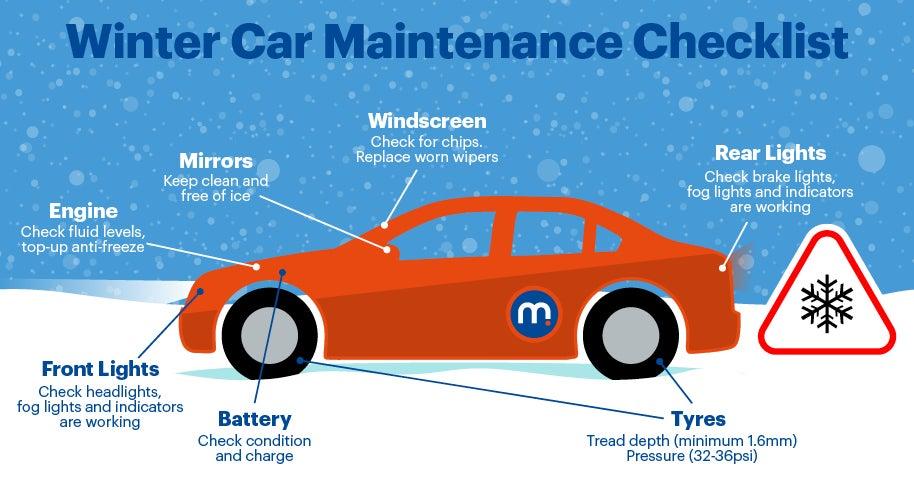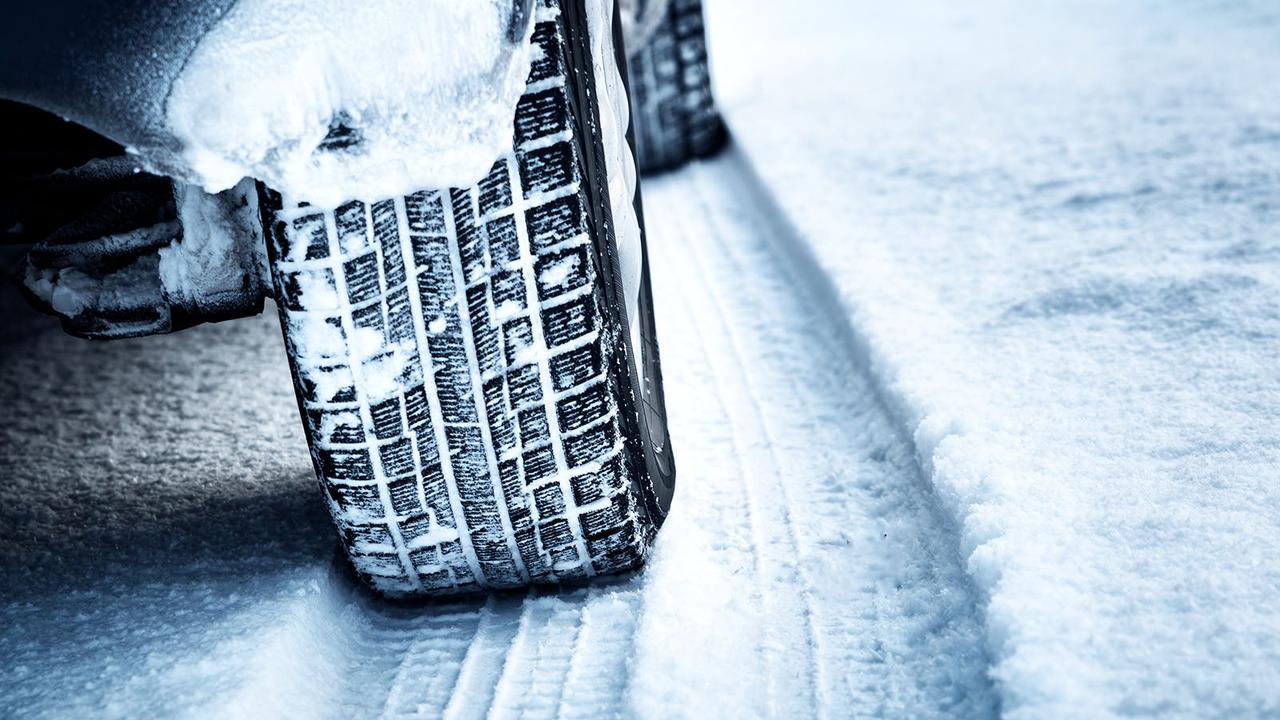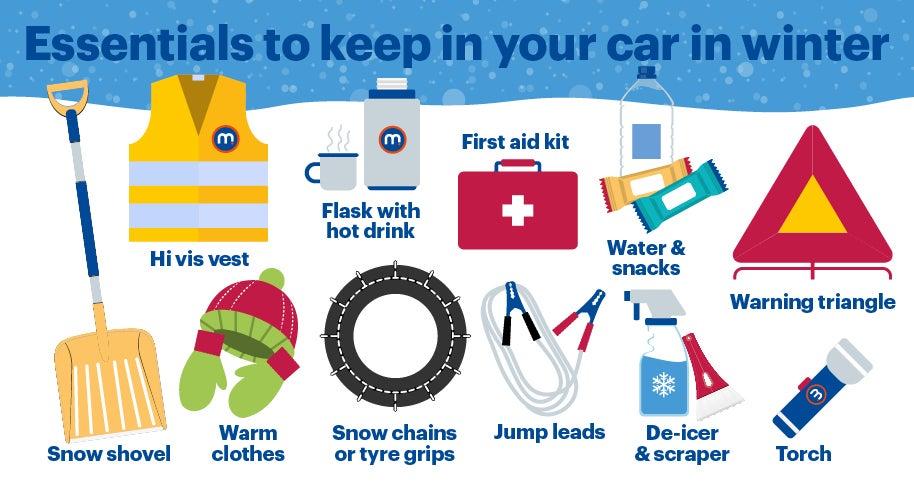Wintry conditions can be hard on your vehicle. Prepare for the cold season with a winter car check
It’s all too easy to presume your car is ready for winter – it’s been reliable all year, so why worry when the mercury drops? But it’s really important to check essential bits of your car on a regular basis.
There are numerous garages offering a free winter car check, or a more thorough one that you have to pay for. It could be worth paying for one of these if you want total peace of mind that your car is prepared for winter, but you can also do a lot of common winter car checks yourself.
In this guide we’ll tell you what you should check and how to do it. And whether you should treat your car to a hat and some gloves.
Why should I check my car in the winter?
Not only will a winter car check help to keep you safe during the colder months, but you’ll potentially pose fewer hazards to other road users. You may also identify minor fixable problems on your car while carrying out a winter check, and these can then be repaired earlier before they get worse over the course of the winter (and potentially end up costing you more money).
Remember – it’s the driver’s responsibility to make sure their car is safe and roadworthy – regardless of whether they’re the owner of the car or not. Did you know that if you’re caught driving a vehicle in a dangerous condition you could be fined up to £2,500, receive three penalty points on your license and even be banned from driving?
What should a winter car check include?
A winter car check should be comprehensive; covering and checking every element of your car that could potentially put you in danger during winter driving. Our winter car checklist will help you to cover all of the most frequently problematic areas that you can check yourself at home.

Check your tyres
This is one of the most important checks you should carry out on your car all year round. Your tyres are responsible for maintaining your car’s grip on the road, so they must be fully prepared for changes in the weather (e.g. ice and rain).
The two main checks you can carry out are to check that the pressure and tread depth of your tyres are at the optimal level. You also need to check your tyres for signs of cracking or damage, as any defect will mean your tyres need repairing or replacing immediately.
Tyre pressure
Recommended tyre pressures for your car can be found in your owner’s manual. Some may have a sticker in the car itself (e.g. inside the door or petrol cap) with these details on. You can either inflate your tyres at home, with a bike pump or similar, or out and about at a petrol station or car garage.
Driving your car with tyres at the incorrect pressure can have an impact on your driving safety.
Underinflated tyres:
- Are more likely to suffer from tyre failure
- Increase stopping distances, therefore your chances of having an accident
- Wear more on the edges of tread
- Decrease fuel efficiency (meaning it will cost you more to drive the same distance)
Overinflated tyres:
- Have less contact area with road, which will reduce traction
- Suffer from increased tyre wear in the centre of the tread
- Increase stopping distances
Tyre tread depth
Tread depth on your tyres must be a minimum of 1.6mm. If you are involved in an accident and your tyres don’t meet the legal requirements it could invalidate your insurance and you could be prosecuted for driving a vehicle that is in a dangerous condition.
Furthermore, drivers with tyres found to be below the legal tread depth of 1.6mm may also face a fine of up to £2,500 and receive three penalty points… per tyre.
We would recommend that your car tyres are comfortably above these levels, so replace them if they’re nearing the limit.
Winter tyres

You may want to consider changing to winter tyres in the colder months. Not only are they made of a rubber compound that grips better in cold temperatures and on slippery roads, their tread pattern provides more grip in snowy and icy conditions and can help prevent aquaplaning during heavy rainfall.
While it's a bit annoying to have to buy a second set of tyres for your car, you'll only be using one set at a time, prolonging the life of both your winter and summer tyres. Read our guide to winter tyres to find out more about their benefits.
Windscreen, windows and mirrors
Clean windows and mirrors are essential for driving safely on the road, whatever the weather. Wintry conditions can cause issues before or while you drive, and you should always fully clear your windows, bonnet and roof of ice and snow before setting off.
Check the condition of your windscreen wipers – listen to them and look at how effectively they are clearing your screen. Wipers should be relatively quiet and clean water from your screen with ease. If they are noisy and not cleaning the whole windscreen you should look at replacing them. Don’t forget to check the front and back wipers, if you have them.
Engine antifreeze
Engine coolant – also called antifreeze – helps keep your car running at the right temperature, helping to avoid overheating or freezing parts, both of which can cause damage. Engine coolant is just as critical in the winter months as it is the rest of the year. Ensure it is at the correct level, and check the levels regularly so you can spot any problems, such as leaks, early on.
How to check your vehicle’s coolant levels
Open your car’s bonnet and look for the correct tank. Your car owner’s manual should tell you where to find this.
The coolant tank has minimum and maximum markings on it. Ensure the coolant levels in your car are between these levels, and top up if necessary.
The coolant is made up of water and monoethylene glycol, a liquid with antifreeze properties. The ratio of water to antifreeze must be correct so the coolant itself doesn’t freeze (this can freeze between 0 and -20C, mixing with water will lower the freezing point). Ready-mixed engine coolant is available so you don’t have to worry whether your ratios are correct.
Battery check
All parts of your car that the battery powers, like the windscreen wipers and headlights, see extra use through winter, so good car battery health is essential.
A failing battery will mean that your car will struggle to start, a problem that’s made worse in winter anyway. The drop in temperature affects the chemical process that produces and stores electricity in the battery. This can reduce the battery’s ability to hold its charge.
You can check the charge on your battery using a car battery tester. These are available to buy from most car accessory retailers. If you have one that provides a specific reading, you are ideally looking for a figure of 12.4V or higher. Anything below this means that your battery needs charging or changing.
It is also important to remember that when your car is in regular use the battery is charged by the car’s alternator. So if your car has not been driven recently, putting it back into regular use will help maintain the voltage of the battery.
Headlight check
As the nights and mornings get darker through winter, your headlights become a much more important part of your car and see more use than they do in summer. Although it’s illegal for your lights to be faulty anyway, a broken light is extra dangerous in winter darkness and suboptimal driving conditions.
Be sure you are checking all your lights on a regular basis (and not just relying on dashboard warning lights), especially when poor weather conditions are forecast (e.g. snow, fog and rain). You can check your headlights by starting your car and switching each light on in turn. Walk around the car and visually check that they are working.
Don’t forget that dirty headlight covers can impact the effectiveness of your headlights. Keeping them clean should be another car care priority throughout the winter. While you’re at it, make sure your number plates are clean and readable, too.
Winter car care and driving tips
Aside from making sure your car is in perfect working order before winter, it’s a good idea to prepare yourself for the challenges of driving in adverse conditions. There are several things you can do to minimise the risks of driving in ice or snow.
Carry an emergency winter kit
Carry an emergency winter kit in your boot in case you get stuck in snow or your car breaks down. Even a short trip to the supermarket could become hazardous if the weather takes a sudden turn.
A good emergency kit should contain a shovel, torch, warm clothes and blankets, food for anyone who might be in the car, hot drinks carried in a sealed flask, water, de-icer, and chains or snow grips for your tyres, a high-vis jacket or vest, plus anything else you think you might need. Try to ensure your phone is charged before or during every journey, especially if you’re heading out into the countryside.

Leave extra time for journeys and plan routes
Driving times are much less predictable in bad conditions – they can be impacted by snow, ice or excess water on the roads. Account for delays and set off on journeys earlier to ensure you arrive at your destination in time.
If you are travelling longer distances, make sure that you keep up to date with local weather conditions along the route.
You should also spend time planning your journeys before you leave the house. Consider avoiding smaller side roads and lanes that may not have been gritted, as well as difficult junctions. Some sat navs will be able to reroute your journey based on live traffic information – it is beneficial to check if your car’s navigation can do this. If not, you should consider identifying alternate route options in case you encounter any road closures, or use your phone – either in a holder or via Apple CarPlay/Android Auto.
Thoroughly de-ice your car
De-icing your car before setting off will help make sure that you have maximum visibility. This is hugely important to help avoid hazards on the road in more treacherous conditions.
There are many ways to de-ice your windscreen, but the best way is to switch your car on and put the heaters on full, as well as using a deicer spray and ice scraper on the outside. This method reduces the risk of scratching or cracking your windscreen that other methods may cause. Using cold or room temperature water to de-ice your car is best avoided, as this increases the chances of your windscreen refreezing when driving. It could also freeze your wipers to your windscreen, causing damage when you try to switch them on.
Some cars may come fitted with heated windscreens that help to clear away ice and condensation… meaning you don’t need to use the heating system in the car for this.
Did you know that snow falling off your roof while driving could see you penalised for driving without due consideration? If there has been heavy snowfall, make sure that all the snow has been cleared from both your car’s roof and windows.



































